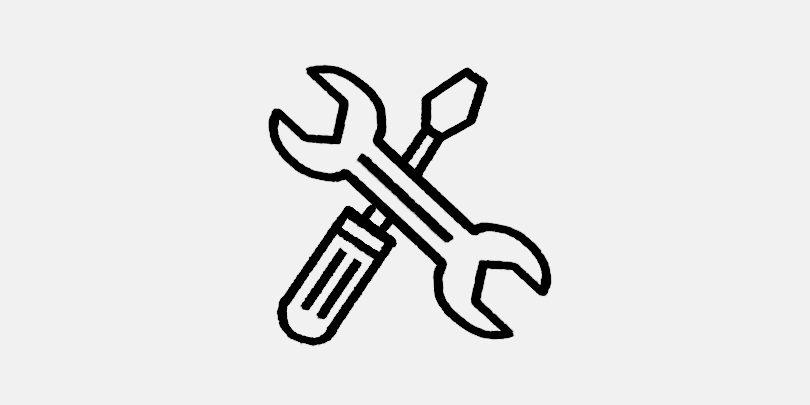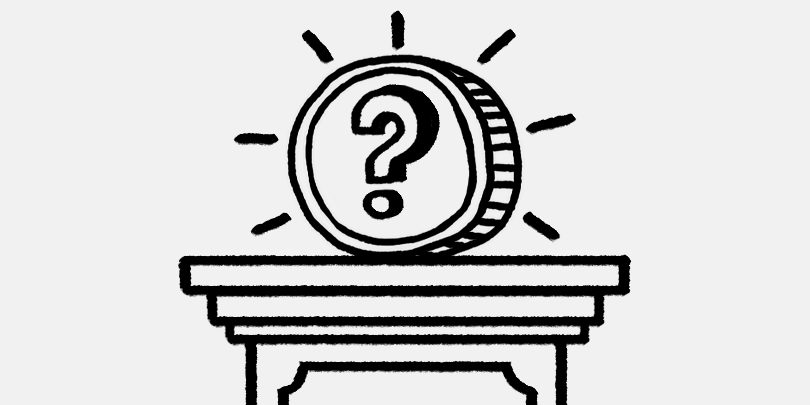The realm of digital money is full of words that are not always clear even for experienced traders. We tell you what a novice user needs to know in order to pass as his own in any conversation about cryptocurrency
To work in the digital money space, you need to know and understand many terms. The editorial staff of topplabs.org prepared a list of the most important concepts and divided it into blocks: cryptocurrency, blockchain, mining and trading.
Cryptocurrency
Altcoin is a term that describes all digital assets that are alternatives to Bitcoin. The first altcoins appeared in 2011, they were Litecoin and Namecoin.
Bitcoin (Bitcoin) – the first cryptocurrency. It was released in 2009 by a person (or group of people) hiding under the pseudonym Satoshi Nakamoto. At the moment, Bitcoin is the leader of the crypto market with a share of 59%.
Cryptocurrency is a digital asset and at the same time a payment system that uses a cryptographic function to encrypt records. Cryptocurrencies are based on distributed ledger technology – blockchain. Cryptocurrency is considered an alternative to fiat money issued by the government.
Stablecoin is a fixed rate token. Most often, the quotes of such coins are pegged to the dollar. There are other options as well. For example, Tether released the XAUT stablecoin, which costs as much as one troy ounce of gold.
A token is a digital asset that is related to a specific project and is issued based on a cryptocurrency. For example, based on the Ethereum blockchain platform, you can create ERC20 tokens, including the well-known stablecoin USDT.
Shitcoin is a coin issued by scammers. This is also the name of unpromising cryptocurrencies.
Ether, Ethereum is the leading altcoin in terms of capitalization. It was released by developer Vitalik Buterin in 2015.

Blockchain
Address is a set of characters that are used in the cryptocurrency blockchain to denote a specific wallet or smart contract. At the address, you can transfer funds within the coin network. Addresses can also be presented in the form of a QR code.
Block – a list of transactions in the cryptocurrency network that have been processed and confirmed by miners. Blocks are created once in a certain period of time, for most cryptocurrencies it is different. For example, in the Bitcoin blockchain, a block is generated every 10 minutes. The block, after formation, is added to the previously found blocks connected in a chain. This is how the blockchain is formed.
Blockchain (from English – block chain) is a distributed ledger consisting of a chain of blocks, within each of which transactions are recorded. Each subsequent block is linked to the previous one. This sequence cannot be violated or modified, otherwise the data on the cryptocurrency network will become invalid.
Wallet is an application for storing cryptocurrency. It allows users to access digital assets, transfer them to other addresses, use them for payment and other purposes.
There are several types of wallets. Cold or hardware – wallets in the form of a separate device, similar to a USB flash drive. They are considered the safest, since you can use the cryptocurrency only by having direct access to the wallet and knowing the password from it.
Browser wallets are wallets that are built into the browser as an extension.
Desktop wallets are special applications installed on a computer.
Exchange wallets are wallets that users receive by opening accounts on exchanges for trading cryptocurrency. This method of storing funds is considered the most unsafe.
Key – a set of characters that is needed to gain access to a cryptocurrency wallet. There are two kinds of keys. Public – aka address – allows anyone to view the contents of the wallet. Private – this key is required to spend funds from the wallet.
Pending is a transaction that has already entered the blockchain, but has not yet entered the block and is awaiting processing by miners.
A smart contract is a specific algorithm recorded on the blockchain. Smart contracts are used to conduct complex transactions, such as issuing tokens or exchanging assets through decentralized applications.
Transaction is an operation in the blockchain, for example, transferring coins between wallets or using a smart contract.
Fork – the creation of an alternative blockchain from an existing one. When carrying out a soft fork, a modification is made to the old block chain. A hard fork splits the original blockchain into two independent ones. As a result, a new cryptocurrency is formed. For example, the Bitcoin hardfork resulted in the Bitcoin Cash coin. It later split into two new forks: Bitcoin Cash and Bitcoin SV.
Halving is a mechanism that lowers the reward for mining cryptocurrency. For example, on the Bitcoin network, halving occurs approximately once every four years. The last time this happened was in May 2020, after which the reward for finding one block decreased from 12.5 to 6.25 BTC.

Mining
Cryptocurrency mining (from English – mining) is the process of finding a block in the blockchain of a coin. Miners – people and their devices for mining – receive a reward in cryptocurrency for finding a block, that is, they mine it.
A mining pool is an association of miners who collectively mine cryptocurrency. Many devices are combined to find a block, the reward is divided among all participants in the process.
Mining farm – several devices combined to mine cryptocurrency. Unlike mining pools, a farm is usually owned by one person
Cloud mining is a type of mining that does not imply the purchase of equipment. The company buys devices for mining cryptocurrency and rents them out on a remote basis.
Mining difficulty is a parameter that determines how much computing power is required to find a block in the coin network. The difficulty of mining grows as the hash rate increases.
The hashrate or computing power of a cryptocurrency network is the computing power of all mining devices connected to the coin's network. Measured in hashes per second. The more devices are connected to the network of a particular cryptocurrency, the higher the hash rate.

Trading
Bulls (the opposite of bears) are market participants who expect the price of an asset to rise and buy or hold it in order to lock in profits in the future. When a bull sells cryptocurrency, it can go over to the side of the bears, which play to bear down.
Volatility is the degree of fluctuations in the price of a cryptocurrency over a certain period of time. The higher this indicator, the more the coin became more expensive and cheaper, for example, within a month. Assets with higher volatility carry more risks, but at the same time provide more opportunities to capitalize on strong fluctuations in the exchange rate.
Dump is a deliberate sale of a large amount of cryptocurrency in order to bring down its course.
Keith is a large player with a lot of funds. He may have enough capital to manipulate the price of the asset.
Long or long position is a transaction in which a trader or investor buys an asset and expects its value to rise.
Bears (the opposite of bulls) are market participants interested in a fall in the price of an asset. They can wait for the asset to fall in price in order to buy it at a better price, or play short – that is, hold a short position.
Pump is a deliberate overstatement of the price of a cryptocurrency. Several high-net-worth users can team up to "pump" a coin and then sell it to other users at an inflated rate. Almost always, the pump ends in a sharp drop, and the profit is fixed mainly by the organizers of the scheme.
Rocket is a slang term that means a sharp rise in the price of a cryptocurrency in a short period of time. On the chart, the asset looks like a large, green candlestick.
Snot is a slang term that means a sharp decline in the price of a cryptocurrency in a short period of time. On the asset chart, it looks like a large, red candle.
Tuzemun – translated from English "to the Moon" means a flight to the moon. This means the rapid rise in the price of cryptocurrency.
Flat or sideways movement is a situation when the market or the rate of a particular cryptocurrency does not rise or fall, but is clamped within a certain range. For example, if the bitcoin rate fluctuated in the range from $ 9000 to $ 10,000 over the course of a month, it means that it was in a flat all this time.
Hodl or Hodl is an abbreviation resulting from a distortion of the English word Hold – to hold. It implies the purchase of cryptocurrency and its storage for a long period of time due to the belief in future growth in value. It stands for Hold On for Dear Life – to keep it as if life depends on it.
The hamster is a novice trader who tends to make erroneous decisions due to panic and emotion.
Short or short position – a deal when a trader borrows a cryptocurrency from an exchange secured by his assets, immediately sells it and waits for its price to decrease. When the price falls, the trader will be able to buy the same amount of coins that was borrowed, but cheaper, and return the debt to the exchange.

Other terms
The 51% attack is a manipulation of the cryptocurrency blockchain, which will make it possible to gain control over it. An attacker or a group of attackers connects mining equipment to the coin network, the amount of which is sufficient to capture more than 50% of the computing power. This allows you to process transactions that are beneficial to the fraudster, for example, spend more funds from the wallet than it has.
An airdrop is one of the ways to attract new users to a project, implying a free distribution of cryptocurrency. Tokens can be obtained just like that or for performing simple tasks, for example, for registering on the platform that conducts an airdrop, or for inviting other traders to register.
All Time High (ATH) – the historical maximum of the value of the cryptocurrency. For example, the bitcoin rate set its ATH in December 2017 at $ 20,000.
Decentralized Application (Dapp) – decentralized applications and services that are open source, built on the blockchain and work autonomously.
Decentralized Finance (DeFi) is the sphere of decentralized services, which include exchanges and platforms for opening deposits and issuing loans secured by cryptocurrencies.
Fear of missing out (FOMO) – fear of lost profits. It is inherent in novice traders who are ready to invest in cryptocurrency, fearing that they have missed the growth of its value.
Initial Coin Offering (ICO) or initial coin offering is a way to raise primary capital using cryptocurrency, similar to an IPO on the stock market. The project sells its tokens to investors and uses the proceeds for development. ICO participants hold the purchased tokens in the hope of future growth in their value.
Initial exchange offering (IEO) is an alternative to ICO. The principle is the same, but the project organizes the primary sale of tokens using a specific exchange.

